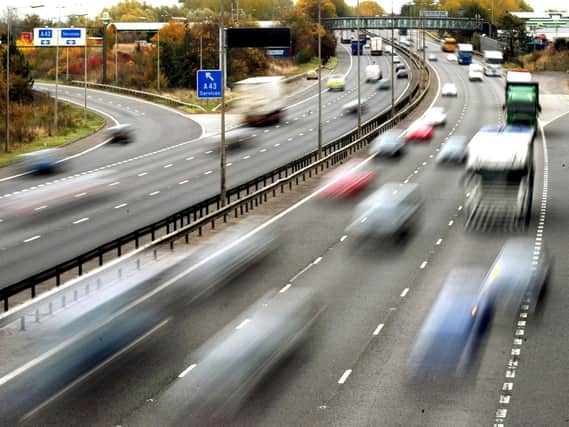Promises not kept on smart motorways - Yorkshire Post Letters


FOLLOWING several tragic fatalities over recent years on so-called ‘smart’ motorways, a coroner has referred Highways England for potential charges of corporate manslaughter.
Meanwhile the Roads Minister has admitted (The Yorkshire Post, July 1) a “gap” between the stance of Highways England and the Department for Transport on the one hand, and public perception on the other.
Advertisement
Hide AdAdvertisement
Hide AdThe Government bodies claim that ‘smart’ motorways are at least as safe as the conventional forms.
In January 2020, the BBC broadcast a Panorama programme on the matter, in which Transport Secretary Grant Shapps recognised that too many different types of motorway regime is confusing. He said the new schemes should not be progressed unless they were clearly safer than traditional arrangements. The Highways Agency stated that the development had been signed off by Ministers.
The former Roads Minister Mike Penning, interviewed for the same programme, stated that he originally signed off the proposal to introduce ‘smart’ motorway schemes following a trial, on a stretch of the M42, in which refuges were placed at 600-metre intervals. However, in implementation, refuges have been up to 2.5km apart! Mr Penning agreed that the roll-out of the ‘smart’ motorway schemes has not matched the specifications he approved. Clearly, a four-times wider spacing of refuges makes a breakdown stuck in the running lane four times more likely.
The Panorama programme further reported that radar technology, to detect stopped vehicles and automatically set warning signs, was only installed on two sections of the M25 and this has not been done elsewhere. Most so-called ‘smart’ motorway sections have been automation-free, depending solely on human camera-watchers to detect problems and activate warning signs. The average time for this was stated as 17 minutes to detect, and a further three minutes to activate warnings.
Advertisement
Hide AdAdvertisement
Hide AdIt seems abundantly clear from the above evidence that the motorway adjustments that have been made so far are not in accordance with the overall proposals that were given ministerial approval, so the on-going official protestations that existing ‘smart’ motorways have such approval are therefore bogus.
In any other area of life, an organisation which supplied a product not in accordance with its safety approval would quite rightly suffer the full wrath of the law and of public opinion, especially when such wilful obfuscation has resulted in so many avoidable fatalities.
From: Dennis Whitaker, Baildon, Shipley.
JUST under two years ago, I submitted a letter concerning the death of a young man on a smart motorway. At the time, I suggested that hard shoulders should be embossed with yellow chevrons, in order to constantly remind drivers that they are on a hard shoulder.
Since that first letter, I have submitted three letters to the BBC, one to our MP where I asked that the letter be brought to the attention of Grant Shapps – in return for which, I received the courtesy of a reply from Baroness Vere. I have also submitted other letters to The Yorkshire Post, which you very kindly printed. Each time, I have suggested the use of yellow chevrons.
Advertisement
Hide AdAdvertisement
Hide AdI see the matter is still being debated in Parliament (The Yorkshire Post, July 1). There is talk of ‘System of Systems’, whatever that means and Midas (a system of sensors), all based on technology.
Yellow chevrons on a hard shoulder doubling up as an ‘all running lane’ will enable the driver to keep his/her eyes ‘on’ the road, rather than ‘off’, looking for intermittent signs. I believe they would also help a driver to keep a safe distance from the vehicle in front.
This measure is neither rocket science, nor costly, and I cannot think of any objection on the grounds of safety.